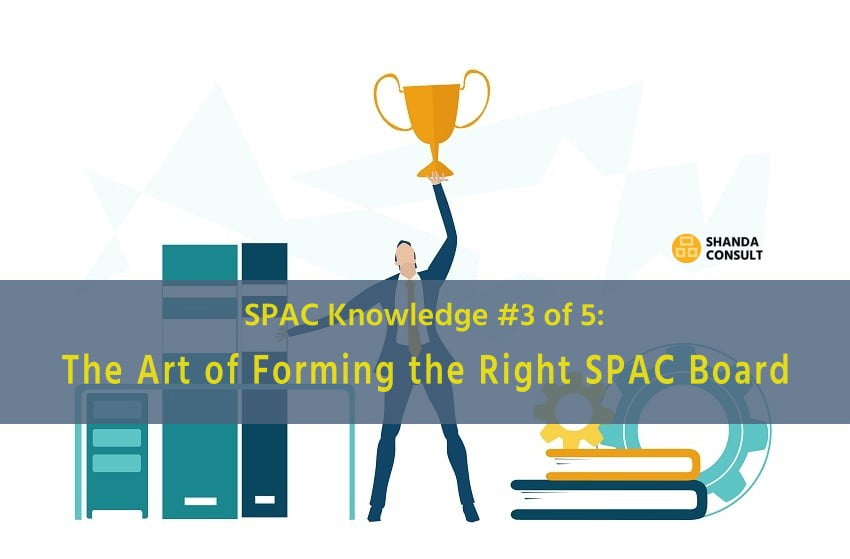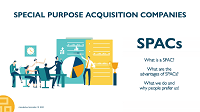SPACs – The Right Board
An excellent SPAC Board is of vital importance for the success of a SPAC
SPACs – Forming the right Board of Directors
Who Should be on The Board of a SPAC?
Please read more about SPACs and our SPAC services on our dedicated SPACs website.
Special Purpose Acquisition Companies (SPACs) are a great way to create competitive companies and take private assets into the public markets. A SPAC needs to have great minds on its board of directors, as the process of creating, funding, and buying assets with a SPAC is nuanced.

A SPAC is created to buy assets.
While this may seem like a simple enough proposition, the process by which a SPAC is spotting the right acquisition targets, closing the deal with the target company shareholders and merging the acquisition target company into the SPAC needs to be overseen by professionals who have a deep knowledge of public companies and perhaps SPACs, and also the acquisition target sector in which the SPAC will make purchases.
Whenever a SPAC is created, the board of the company is a vital consideration and crucial for successful acquisitions. Let’s have a look at some of the things that should be considered when choosing the board of a SPAC.
Experience in Managing Public Companies
At least the CEO and CFO of a SPAC should have a deep knowledge and proven experience of how public companies work, and how to manage one. Even though a SPAC may not have a lot of employees, they are subject to the regulations any other public company would be, and board members need to understand how to navigate the regulatory environment.
A SPAC’s board also needs to understand how a SPAC works, and all of the regulations that apply specifically to the structure. The board of a SPAC will be responsible for doing most of the work when it comes to researching the acquisition targets and building consensus with the institutional investors.
Expertise in Target Sector
When a SPAC is formed, its prospectus will include an acquisition strategy.
This statement, the prospectus, will be used to guide the SPAC, and limits the kinds of assets that a SPAC can consider acquiring. The board of a SPAC will need members who understand the industry that the target companies operate in, and how best to create value via an acquisition in the sector.
For example, if a SPAC is created to acquire assets in the legal cannabis sector, it is vital that the SPAC’s board have members who understand the legal cannabis business, and what kind of companies may offer value to the SPAC.
Smooth Cooperation
The acquisition process that a SPAC follows is complex and requires an amazing level of communication between the SPAC board, the investors, and the target companies. Anyone who is on the board of a SPAC needs to be able to cooperate with everyone involved with the deal and build consensus among all the parties.
A SPAC is geared toward friendly acquisitions, and it gives its institutional investors a tremendous amount of control over how their money is used. If the institutional investors don’t like a potential acquisition target, they have the ability to pull their funds from the SPAC trust account at any time.
The same cooperative ability is also vital when dealing with the people at acquisition targets.
A SPAC can’t force a private company to sell off its assets to the SPAC, and the owners or board members of a target company may end up on the board of the SPAC after the acquisition is made. Making sure that relationships start off on the right foot is an art form, and anyone on the board of a SPAC should be a master of crafting positive relations.
Deep M&A and RM Knowledge
Mergers and Acquisitions (M&A) and Reverse Mergers (RM) are an area of specialist knowledge, which needs to be represented on the board of a SPAC, typically by the CEO and CFO. Every member of the board doesn’t need to be an expert on M&A and RMs, but every SPAC board should have someone who knows this area and can help the SPAC avoid potential problems that may arise during the hunt for acquisition targets, or the acquisition process.
Can They Manage Risks?
The board members of a SPAC will have to manage risks at every stage of the SPAC’s lifecycle. There are insurance policies that are created specifically for SPAC Directors and Officers (D&O), and also to cover any lawsuits or other setbacks that a SPAC may face as it is formed, funded, and works to make acquisitions.
Any board member of a SPAC will need to understand the risks that exist at each stage of the SPAC, and how to best create cost-efficient safeguards to both the board, and the company itself. Board members should also have deep connections in the investment community so that if one institutional investor decides to back out of the deal, they can be replaced quickly.
Choosing the Right People
It is imperative that a SPAC has a board that understands the regulations that govern public companies, M&A, RMs, and also the risks that are specific to the way SPACs operate.
Additionally, anyone who is working with a SPAC needs to know how to build consensus between a range of parties who have diverging interests. A group of institutional investors will have different goals from the shareholders of a private acquisition target, but in order for a SPAC to be successful, all of the parties will have to come to a common understanding.
SPAC Board Members and Their Background
SPAC Board members do bear a great responsibility when it comes to the right acquisitions and thus for the success of a SPAC.
At least the CEO and the CFO of a SPAC are often former managers of public companies. They worked 14 or 16 hours per day for 20 or more years, and eventually decided to step down. Such managers made a fortune from their salaries and bonuses, so they do not need to work. However, they would love to share their knowledge and experience and would not mind mastering new challenges.
SPAC board members do not receive and salary or remuneration until the main acquisitions, also called business combination in the SPAC world, have been successfully finalised.
That means that SPAC board members need to work hard, starting right after the IPO, without any direct compensation.
Instead of salary or any other compensation during the phase until a successful acquisition, SPAC board members receive pre-IPO founder shares of the SPAC. SPAC founder shares are converted into common shares on the day of the IPO, in a ratio 1:4 of IPO proceeds. If institutional investors invest 100 million during the IPO, a SPAC’s founder shares are converted during the IPO to common shares of a value of 25 million, of which the SPAC board members hold their portion.
Shanda Consult Provides Top-Class SPAC Board Members
Shanda Consult is one of a very few holistic service providers for SPACs in the world. “SPAC Project Management” would probably best describe what we offer to our clients.
When we are designing and structuring a SPAC, preparing it for a successful IPO, including SEC approval and roadshow addressing the right institutional investors, we have a special focus on the formation of a convincing board.
Because at the end, it is a SPAC’s business idea and the right board that convinces institutional investors to pour their millions into a SPAC on the IPO.
We approach excellent candidates from our large global network and pick (and convince) those that both have knowledge and experience in the industry where a SPAC plans asset acquisition and that will convince managers of institutional investors.
Brief SPAC introduction of SPACs (new, Feb 2020)
“What is a SPAC? What are the advantages of SPACs? What do we do and why people prefer us!
You are welcome to contact us through the contact form below to have a chat what we can do for you.
Our currently hot SPACs:
LENUS BIOSCIENCES
Our LENUS BIOSCIENCES SPAC focuses on investments in the nanotech medical cannabis industry.
The HEIDI SPAC: Smart Energy with Blockchain & AI
HEIDI, a SPAC focused on the acquisition of promising companies with forward-looking technologies and a track-record in energy production or distribution.


